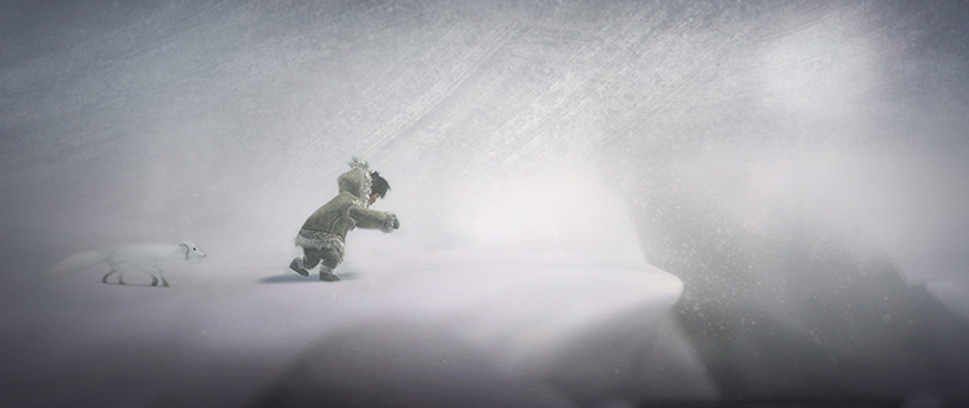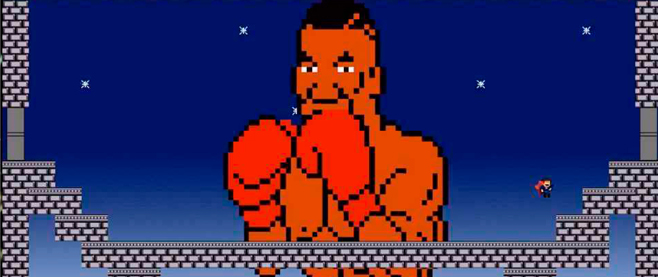
The First Step
The following is a reprint from Unwinnable Weekly Issue Twenty-Five. If you enjoy what you read, please consider purchasing the issue or subscribing.
———
Historically speaking, Native American representation in video games has been very poor. Wikipedia only lists about ten games with Native American protagonists, and as this Storify demonstrates, few of them are protagonists that either the Native American or gaming community can be proud of. The Iñupiaq community in north/northwest Alaska hopes to change that with Never Alone, a simple puzzle platformer based on their culture. A question arose when I played it: how will the game make that culture relevant to the outside world?
By its own admission, Iñupiaq culture is highly traditional, with strong roots in the past. How does one go about applying those traditions to a modern world where they risk fading into obscurity? In the game’s case, it looks to the conventions of the puzzle platformers. It applies the genre’s mechanics and Iñupiaq aesthetics to modern problems like climate change, arguing that this culture is more relevant now than ever. The genre lends itself well to Iñupiaq traditions.
Two hallmarks define puzzle platformers. First, they are a space for narrative experimentation in games. They don’t that stress gameplay through challenging scenarios. In fact, their gameplay is usually very simple (Never Alone is no exception). Nor do these games stress narrative for the player to enable the story to move forward as it sees fit. Games like Out of this World and Limbo afford their players a very active role in the story. In these titles, the player’s actions aren’t just part of the story; they are the story. Any narration/cinematic is there as contextual flavor, not as the dominant mode of relaying the narrative.
Never Alone modifies this, if only to fit the culture it hopes to portray. It follows the story of a young girl named Nuna and her arctic fox as attempt to find out what has destroyed her village while a violent blizzard hurts the land. Unlike similar titles, the co-op puzzles are not enough to relay the story. While they are important, they’re equal partners with the narration that drives the story forward at frequent intervals. Telling the story in this way extends the “lived experience” spirit of the puzzle platformer and makes the game an active storyteller. The game translates oral tradition into an interactive form, reinvigorating Iñupiaq traditions for a modern audience.
It’s the same reason the game is so insistent on local co-op. Cumbersome? Yes. However, it’s not without reason. Iñupiaq culture is very communal and strongly tied to family. The game needs that second player right by your side (instead of halfway across the globe) to create that interconnected feeling that’s so important to the culture it’s portraying. Never Alone isn’t just a game with some Iñupiaq aesthetic sprinkled about. It brings the Iñupiaq to life by embedding their values directly into play.
The game is very aware of its place in the modern world. Along with narrative experimentation, puzzle platformers have always stressed interacting with and finding your place in the environment around you. And Yet It Moves and Fez epitomize that by making the player rotate the environment independent of their character to advance through the game experience. Never Alone doesn’t go nearly that far. It’s content to give its duo some navigation puzzles that test their unique abilities. For instance, Nuna pushes a box for the fox to jump on, which he uses to jump up walls and lower a rope for her to climb to the next area.
The role the pair occupies in the world around them obviously fits the genre’s conventions as well as Iñupiaq beliefs about the interconnectedness of man and the natural world. And yet, look at the levels and what do you see? A world that’s neutral to the characters in it. But it’s also a world struck by decay. Many of the manmade structures in Never Alone are either completely destroyed or on the verge of destruction. With the harsh blizzards, it’s sometimes difficult imagining how anybody could live in this world.
This may sound like business as usual for Alaska, the reality is that it’s a recent development on account of global warming. It’s a global problem that hit Alaska particularly hard. According to the EPA, the rate of warming for Alaska is twice the national average. Such developments have had a profound impact on the environment and especially Alaska’s Native population, whose way of life relies heavily on the environment. Understood in this context, the game becomes a call to action. It forces us to look at our environment and, in doing so, calls attention to the negative impact we’ve had on our world. Combine game conventions with Iñupiaq themes of change starting with one person, and Never Alone forces us to confront our ability to affect change for the better.
This last point bears repeating, as the game accomplishes these tasks in a uniquely Iñupiaq way. A significant part of Iñupiaq belief is acknowledging our interdependence with the world, which was supposed to be made manifest through the Nuna/fox dynamic. As far as I can tell, the intent was to use their abilities to situate them as equal parts of a greater system. Yet that’s not how the game really represents things. Although both have their functions, the environments demand more of the fox than they do of Nuna. He’s more independent than she is. Even later in the game, when she gets a bola to clear new paths for the fox, it’s still a very fox-centric experience.
At least on this front, Upper One Games failed to represent the culture as they’d wanted, but there’s still value to be had in this error. We should ask ourselves why it is that this imbalance exists. On closer examination, the environments are to blame. They don’t stress an interconnected system; they stress how pressing the (human) need for change truly is. The world can survive just fine without us, but the reverse doesn’t hold true. Even the various spirits hiding about the levels are more self-sufficient than Nuna.
In a world like this, Iñupiaq traditions become more important, especially in light of what caused the world to end up like this. The game’s events don’t say it explicitly, but the game’s at the very least aware of global warming. If the documentary clip about it isn’t convincing enough, take the role of the Manslayer as an example. He’s a common villain in Iñupiaq stories, and he serves that role here. Most of Nuna’s interactions with him amount to her running away from him as he lobs explosives at her, trying desperately to claim her bola for himself. He’s so desperate that he eventually severs Nuna’s ties to nature and to the spirits around her.
Never Alone uses the Manslayer to tie tradition to modern problems. While he’s a long standing figure in Iñupiaq lore, his use of explosive and lust for the bola make him an allegory of sorts for the troubles that arise when technological advancement runs out of control and the devastating impact it has on the world we occupy. In the world that these problems have created, the lessons of Iñupiaq traditions become relevant solutions to the problems we face. We need to be more conscious of our place in this ecosystem and, while we can only truly solve these problems by acknowledging and working on them together, it only takes one person to step forward for that process to start happening.





